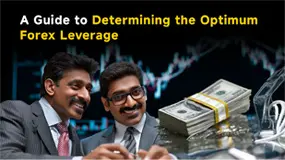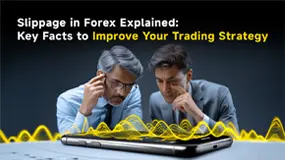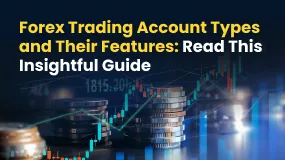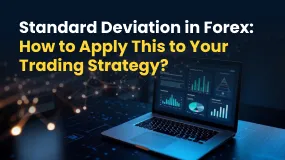简体中文
繁體中文
English
Pусский
日本語
ภาษาไทย
Tiếng Việt
Bahasa Indonesia
Español
हिन्दी
Filippiiniläinen
Français
Deutsch
Português
Türkçe
한국어
العربية
The Smart Trading Strategies for Volatile Markets
Abstract:Volatility is an inherent part of forex trading, and it can present both challenges and opportunities for traders. During periods of high volatility, price movements become unpredictable and often swing dramatically in either direction.

Introduction
Volatility is an inherent part of forex trading, and it can present both challenges and opportunities for traders. During periods of high volatility, price movements become unpredictable and often swing dramatically in either direction. While volatile markets can be risky, they also offer the potential for significant profits—if approached with the right strategies. In this article, well explore smart trading strategies that can help traders navigate and succeed in volatile forex markets.
Understanding Market Volatility
Market volatility refers to the degree of price fluctuation over a specific period. In the forex market, volatility is typically driven by factors such as major economic data releases, geopolitical events, central bank policy decisions, and market sentiment. When the market becomes volatile, price swings can widen, increasing both the risk and the reward for traders.
Key Characteristics of Volatile Markets
Rapid Price Movements: Prices can shift dramatically in a short period, making it difficult to predict trends.
Wider Spreads: In volatile conditions, the spread between bid and ask prices tends to widen, increasing trading costs.
Increased Trading Volume: Volatile markets often see a surge in trading activity, which can further amplify price movements.
Given these characteristics, trading in volatile markets requires a well-defined strategy that accounts for heightened risks and quick decision-making.
1. The Importance of Risk Management
Before diving into specific strategies, its essential to understand the importance of risk management in volatile markets. Implementing strict risk management protocols helps protect your capital from significant losses during unpredictable price swings.
Use Stop-Loss Orders: Always set stop-loss orders to limit potential losses. In volatile markets, prices can move quickly, and having a stop-loss in place helps to exit positions before they become detrimental.
Adjust Position Sizes: When volatility is high, reduce your position size to account for the increased risk. Smaller trades minimize the potential impact of unexpected market movements.
Set Realistic Profit Targets: Volatile markets can trigger large price movements, but they can reverse just as quickly. Set achievable profit targets to lock in gains before the market turns against you.
2. Scalping Strategy: Profiting from Quick Moves
Scalping is a popular strategy in volatile markets because it focuses on taking advantage of short-term price movements. In a highly volatile environment, prices tend to fluctuate rapidly, providing multiple opportunities to enter and exit trades in quick succession.
Small-Time Frames: Scalpers typically trade on small-time frames like 1-minute or 5-minute charts.
Fast Decision-Making: Since trades are held for a very short time, scalping requires quick analysis and execution.
Focus on Liquidity: Look for highly liquid currency pairs with tight spreads to reduce transaction costs and increase profitability.
3. Trend Following Riding the Momentum
Trend-following strategies work well in volatile markets where there is strong momentum in a particular direction. These strategies involve identifying the markets direction—either bullish or bearish—and opening positions that align with the prevailing trend.
Use Moving Averages: Moving averages, particularly the 50-day and 200-day moving averages, help identify trends. When prices are above the moving averages, the market is typically in an uptrend; when below, its in a downtrend.
Wait for Confirmation: Before entering a trade, wait for confirmation that the trend is established. This can be done by looking at price action or using technical indicators such as the Relative Strength Index (RSI) or the Moving Average Convergence Divergence (MACD).
Ride the Wave: In volatile markets, once a trend is established, it can gain strength quickly. Traders can ride the trend until there are signs of reversal.
4. Range Trading: Profiting from Market Fluctuations
In some cases, volatile markets may oscillate between support and resistance levels without establishing a clear trend. Range trading involves capitalizing on these price fluctuations by buying at support levels and selling at resistance levels.
Identify Key Levels: To successfully trade in a range-bound volatile market, identify the key support and resistance levels where the price tends to bounce.
Use Oscillators: Oscillators like the RSI or Stochastic Indicator can help determine overbought or oversold conditions, which signal potential reversals at the edges of the range.
Stay Agile: Range trading requires agility and the ability to spot when the market may break out of the range, especially during periods of heightened volatility.
5. Breakout Trading: Capturing Large Market Moves
Volatile markets often experience significant breakouts—where prices break through established support or resistance levels. Breakout trading is a strategy that aims to capitalize on these large price movements.
Look for Consolidation Periods: Markets tend to consolidate or trade within a tight range before a breakout occurs. Monitor these periods closely for breakout signals.
Set Entry Orders: To trade breakouts effectively, place entry orders just above resistance levels for bullish breakouts or below support levels for bearish breakouts.
Follow the Volume: Breakouts with increased trading volume are more likely to be sustained. Volume spikes indicate that there is market interest and momentum behind the breakout.
6. Hedging: Minimizing Risk Exposure
Hedging is a strategy used to protect an existing position from adverse price movements. It can be particularly useful in volatile markets where price direction is uncertain.
Currency Pair Correlations: Use currency pair correlations to hedge. For instance, if you have a long position in EUR/USD, you could hedge with a short position in USD/CHF, as these pairs often move inversely.
Options and Futures: Advanced traders can use options or futures contracts to hedge their positions. Options allow traders to limit downside risk while maintaining the profit potential.
Conclusion
Navigating volatile forex markets requires a combination of smart trading strategies, risk management, and the ability to adapt to rapid price changes. Whether you prefer short-term scalping or long-term trend-following, understanding how to leverage market volatility to your advantage can open up significant opportunities. Always approach volatile markets with a well-defined plan, and remain disciplined to avoid emotional trading during periods of uncertainty.

Disclaimer:
The views in this article only represent the author's personal views, and do not constitute investment advice on this platform. This platform does not guarantee the accuracy, completeness and timeliness of the information in the article, and will not be liable for any loss caused by the use of or reliance on the information in the article.
Read more

A Guide to Determining the Optimum Forex Leverage
Want to gain a wider forex market position control by investing a minimal amount? Consider using leverage in forex. It implies using borrowed funds to raise your trading position more than your cash balance can let you do it. Forex traders usually employ leverage to churn out profits from relatively small currency pair price changes. However, there is a double-edged sword with leverage since it can multiply profits as well as losses. Therefore, using leverage in the right amount is key for traders. Forex market leverage can be 50:1 to 100:1 or more, which remains significantly greater than the 2: leverage usually offered in equities and 15:1 leverage in futures.

Slippage in Forex Explained: Key Facts to Improve Your Trading Strategy
Have you witnessed a difference between the expected price of a trade and the price at which it is executed in real time? This might be due to slippage, which can happen at any time. However, it prevails mostly when the market remains highly volatile. At the same time, it can also happen during large order executions. Read on to know more about slippage, its impacts, and the strategies to rein in adverse effects.

Forex Trading Account Types and Their Features: Read This Insightful Guide
Want to open a forex account to enjoy the thrill of compounding returns? You should first know the various forex trading account types. Choosing the right option from the list of forex accounts is critical to experiencing a hassle-free and successful trading journey. Forex brokers design trading accounts based on your needs, trading experience, and financial goals. Therefore, understanding each forex trading account type and its key features becomes essential.. This will help you make the right choice. In this article, we have discussed everything about forex accounts. Take a look!

Standard Deviation in Forex: How to Apply This to Your Trading Strategy?
Do you recall the concept of standard deviation being taught in your school days? The concept, which measures the variation within a set of data points relative to the mean average of the dataset. A greater standard deviation hints at higher variability. On the other hand, a lower standard deviation means lower variability from the mean. But what is standard deviation in forex, and how can you apply it to your trading strategy? This is what we will discuss here.
WikiFX Broker
Latest News
Forex24 Faces CySEC Fine for Late Compliance Filing
One Wrong Move Wiped Out a Government Retiree’s Lifetime Savings
MH Markets Review 2025: Trading Platforms, Pros and Cons
Octa FX in Pakistan: The Complete Guide to Local Payments, Regulation, and Support
Mekness Review: Traders Report Alleged Fund Scams & Account Blocks
INTERPOL, AFRIPOL Crack Down on Africa Terror Finance
Forex Scam Checker Philippines: Verify Brokers with WikiFX
"Our Business Has Died": Texas Services Sector Sentiment Slumps Further In October
D Prime to Exit Limassol Office Amid Doo Group Restructure
Fake Trading Platforms Are Spreading Fast Across Asia | How Investors Are Being Tricked
Currency Calculator



